The Slănic Prahova Salt Mine, located in Romania, is one of the largest and most famous salt mines in Europe. Beyond its historical importance to the region’s economy, the mine has become a fascinating tourist attraction and cultural landmark. Its unique features, cool climate, and historical significance make it a must-visit destination. Follow archeology.dulichvn.net to discover many hidden mysteries that have yet to be discovered.
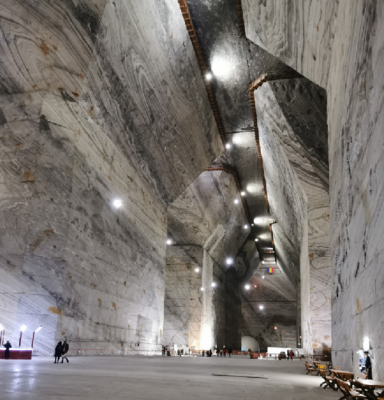
A Rich History of Salt Mining
Salt Mining in Romania: A Tradition Since the 17th Century
Salt mining in Romania has a deep-rooted history, dating back to the 17th century when it became a key pillar of the country’s economy. The discovery of abundant, high-quality salt deposits throughout the region allowed Romania to establish itself as a major producer and exporter of this valuable resource. Over centuries, the salt mines played a crucial role in shaping the economic landscape, fueling trade, and sustaining local communities.
With its salt reserves being integral to the development of the area, Romania’s mining tradition has had a lasting impact on both its economy and cultural heritage. The rich history of salt extraction in Romania highlights the strategic importance of this resource, which not only served daily needs but also contributed to the growth of the nation’s trade networks.
The Establishment of the Slănic Prahova Salt Mine
In 1938, the Slănic Prahova Salt Mine was officially established, marking a significant advancement in Romania’s salt mining industry. With the growing demand for salt and the need for industrial-scale extraction, this mine became a focal point of the country’s salt production. The construction of the mine was a testament to Romania’s engineering expertise, employing advanced techniques for the time to extract the mineral more efficiently.
The Slănic Prahova mine quickly gained recognition, not only for its scale and importance in meeting the country’s salt needs but also as a symbol of Romania’s natural wealth. As one of the largest and most productive salt mines in the region, it became an emblem of the country’s thriving mining industry.
Transition to Tourism: From Salt Extraction to a Cultural Landmark
By the 1970s, the Slănic Prahova Salt Mine began to transition from an industrial facility to a unique tourist attraction. Its distinctive trapezoidal walls, along with the cool, salty air deep within the mine, piqued the curiosity of visitors. Over time, the mine’s mesmerizing atmosphere and historical significance made it a captivating destination for those looking to explore Romania’s industrial heritage.
In addition to its geological wonders, the mine’s climate—remaining consistently cool year-round—further added to its appeal as a health and wellness destination. The transition into tourism included the creation of guided tours, museum exhibits, and recreational spaces, transforming the mine into a cultural landmark. Today, the Slănic Prahova Salt Mine stands as both a historical monument and a popular tourist spot, where visitors can learn about its storied past and enjoy its unique subterranean environment.
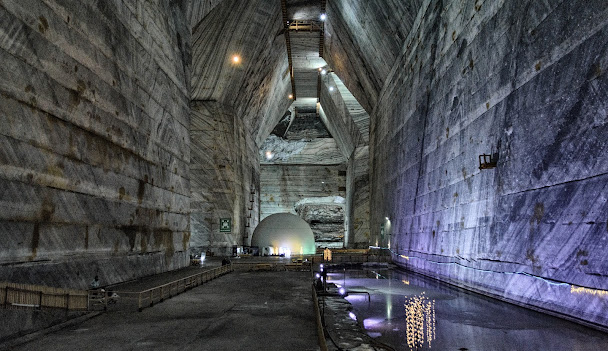
Unique Features of the Salt Mine
Architectural Marvel: The Trapezoidal Walls of Slănic Prahova
The Slănic Prahova Salt Mine’s trapezoidal walls stand as a testament to the ingenuity and craftsmanship of early 20th-century engineers. These uniquely angled walls were meticulously designed to enhance the structural stability of the mine, ensuring its durability over decades of use. Beyond their functional purpose, the walls also create a visually stunning environment, with their geometric precision and the interplay of light and shadows adding an almost otherworldly charm to the underground chambers. Visitors often marvel at the artistry embedded in this architectural feat, which seamlessly merges practicality with aesthetic appeal.
Consistent Cool Climate: A Natural Wonder
One of the mine’s most remarkable features is its steady internal temperature, which remains a cool 53 degrees Fahrenheit (around 12 degrees Celsius) throughout the year. This naturally regulated climate not only provides a comfortable environment for visitors but also highlights the unique geological conditions of the mine. During the sweltering summer months, the mine offers a refreshing escape, drawing both tourists and locals seeking respite from the heat. This stable climate also plays a role in preserving the mine’s structural integrity and its historical artifacts.
Salty Ambiance: A Haven for Health
The air within the Slănic Prahova Salt Mine is saturated with fine salt particles, creating a distinctive ambiance that is both refreshing and therapeutic. Renowned for its potential health benefits, particularly for those with respiratory conditions such as asthma or bronchitis, the mine has become a destination for wellness seekers. Over the years, therapeutic programs have been developed to leverage the mine’s salty microclimate, offering visitors a natural remedy amidst a serene and tranquil setting. This combination of health benefits and serene beauty has solidified the mine’s reputation as a place where history, nature, and wellness converge.
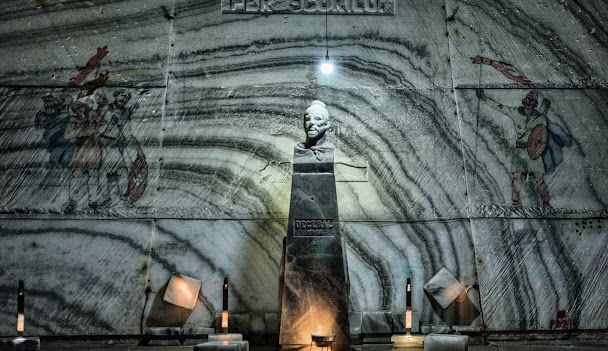
Exploring the Mine Today
The Salt Mine Museum: A Tribute to Romania’s Mining Legacy
The Slănic Prahova Salt Mine Museum is a living testament to Romania’s rich salt mining heritage. Within its expansive underground chambers, visitors are invited to delve into the history of salt extraction, exploring exhibits that showcase traditional mining tools, techniques, and the evolution of the industry over centuries. These displays offer an intimate glimpse into the lives of miners, highlighting their labor and the cultural significance of salt as a cornerstone of Romanian history and economy.
Activities and Attractions: More Than a Museum
The mine goes beyond being a historical exhibit by offering a range of engaging activities. Guided tours take visitors through the vast underground spaces, unraveling stories of the past while showcasing the architectural and geological wonders of the mine. Interactive exhibits allow guests to experience the mining process firsthand, blending education with entertainment. Additionally, the mine’s naturally therapeutic microclimate has paved the way for wellness programs, including respiratory therapy sessions, which draw health-conscious visitors from around the world. Recreational areas within the mine provide unique opportunities for sports like badminton and table tennis or simply relaxing in an unparalleled setting.
Accessibility and Visitor Experience: Designed for Comfort and Learning
The Slănic Prahova Salt Mine is thoughtfully designed to ensure accessibility for all visitors. Paved pathways and well-maintained elevators provide easy access to the underground attractions, while clear and informative signage guides guests through the museum and recreational areas. The mine’s spacious layout and family-friendly facilities make it a welcoming destination for all ages. Whether seeking education, leisure, or health benefits, visitors leave with a deeper appreciation for the mine’s historical and cultural significance, making it an unforgettable part of any trip to Romania.
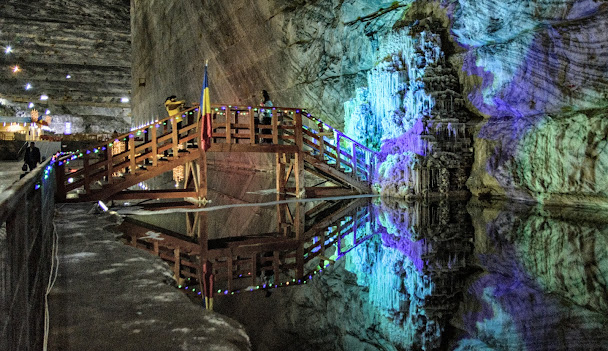
See more: The Goddess Athena: Ancient Greek Wisdom and Power
Plan Your Visit
Best Time to Visit: Ideal Seasons for Exploration
The Slănic Prahova Salt Mine welcomes visitors throughout the year, but spring and autumn stand out as the most enjoyable seasons. During these periods, the weather is mild and comfortable, making it ideal for exploring not only the mine but also the picturesque surroundings. The vibrant greenery of spring and the golden hues of autumn enhance the natural beauty of the Prahova region, adding an extra layer of charm to your visit.
Getting There: Convenient Access from Bucharest
Situated in Slănic, Prahova County, the salt mine is approximately 100 kilometers (about a 2-hour drive) north of Bucharest. Visitors can reach the site conveniently by car, with well-marked roads and parking facilities available near the entrance. For those preferring public transportation, regular train and bus services connect Bucharest to Slănic, followed by a short local journey to the mine itself. Detailed signage ensures a hassle-free trip for travelers arriving by any means.
Nearby Attractions: Discover the Heart of Prahova
A visit to the Slănic Prahova Salt Mine can be seamlessly combined with exploring the surrounding region’s natural and cultural gems. Highlights include:
- The Prahova Valley: Known for its stunning landscapes and charming towns, the valley is perfect for hiking, sightseeing, or simply soaking in the serene atmosphere.
- Bucegi Mountains: A haven for outdoor enthusiasts, offering opportunities for trekking, climbing, and photographing breathtaking vistas.
- Local Villages: Discover the hospitality and traditions of Romanian countryside life by visiting nearby villages, where you can sample authentic cuisine and experience local crafts.
Together, these attractions make a trip to the salt mine an enriching journey into the natural and cultural treasures of Romania.
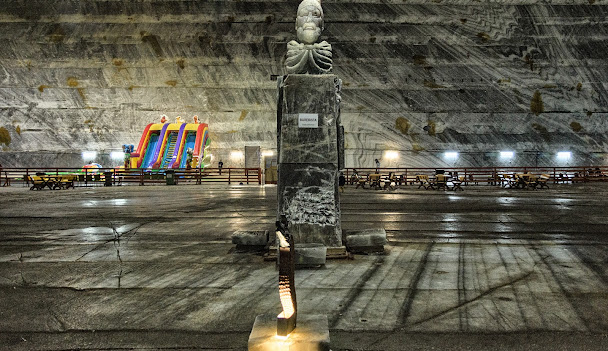
Conclusion
The Slănic Prahova Salt Mine is more than a historical site; it is a testament to human ingenuity and nature’s wonders. Whether you’re interested in history, architecture, wellness, or simply a unique travel experience, this salt mine promises an unforgettable journey into the heart of Romania.


CÁC TIN KHÁC
Mary Walton: The Forgotten Inventor Who Helped Clean Up America’s Cities
Tomb of Queen Nefertari in the Valley of the Queens, Egypt
Discover the Hypostyle Hall of the Temple of Hathor at Dendera
Venus de Losange: Unveiling the Mystery of a 20,000-Year-Old Paleolithic Icon